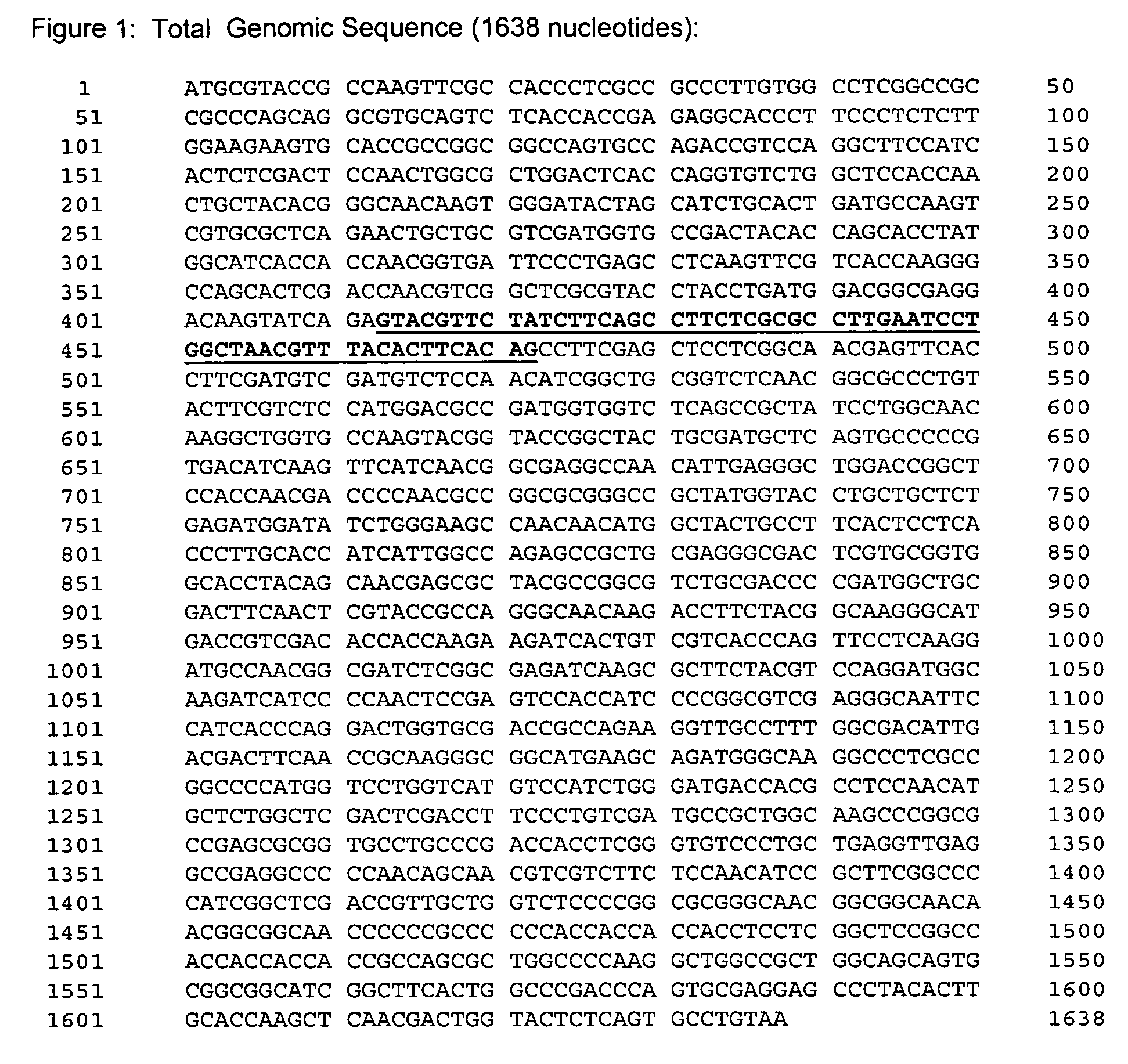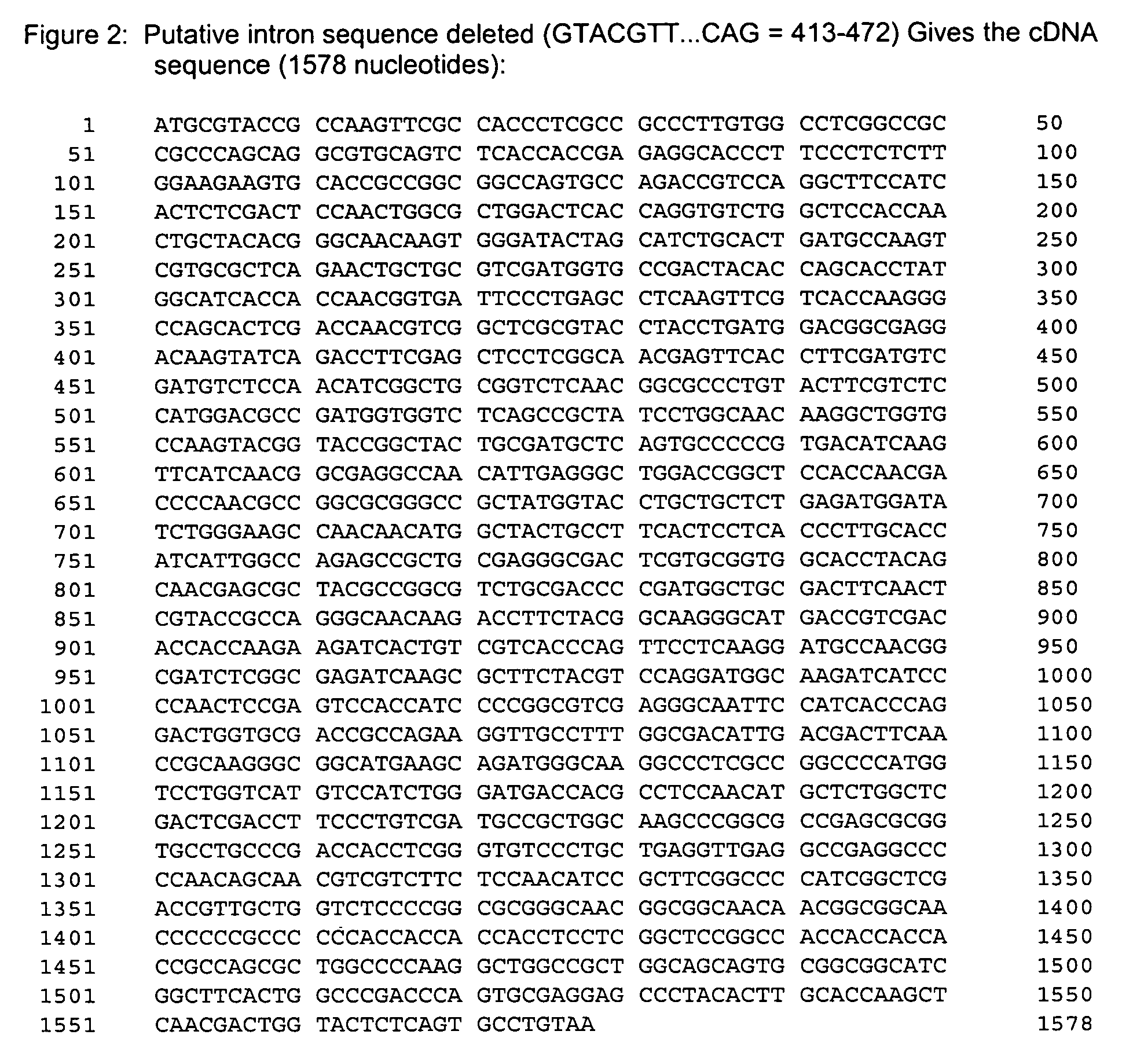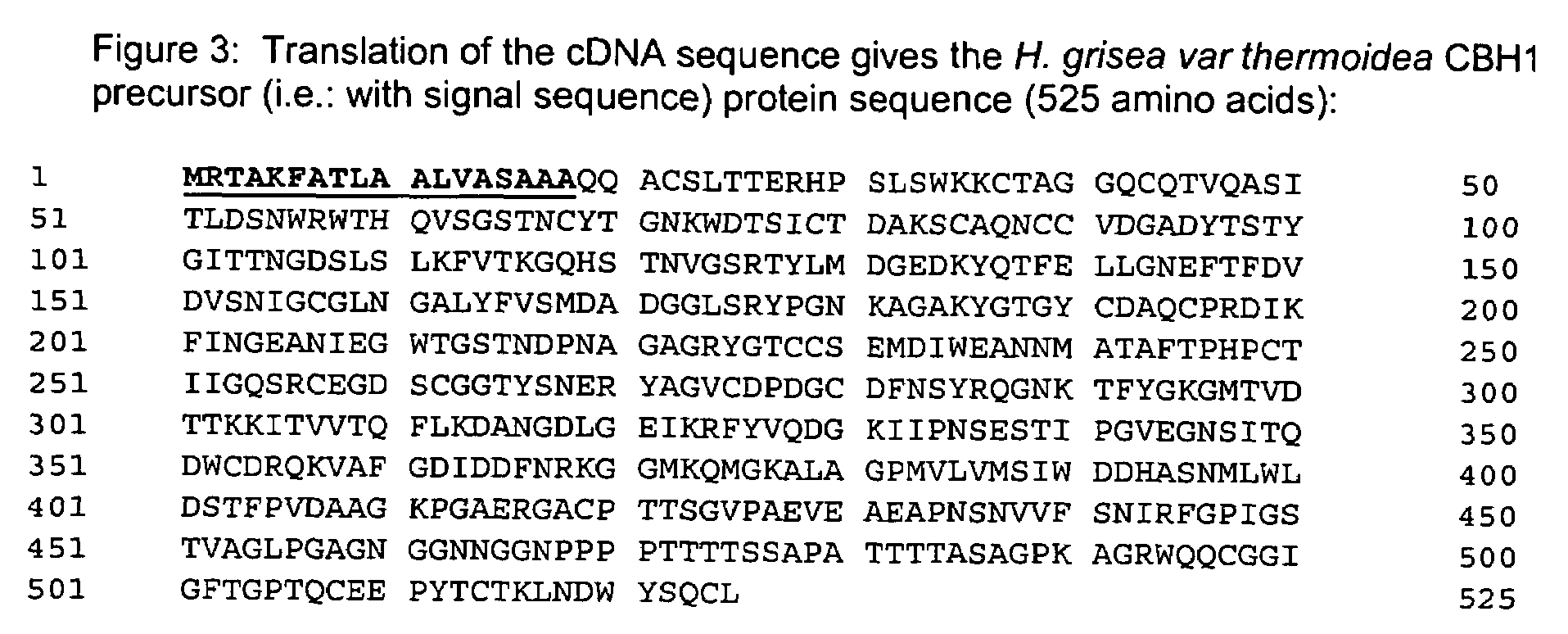Variant Humicola grisea CBH1.1
a technology of humicola grisea and cbh1.1, which is applied in the field of polypeptides, can solve the problems of difficult experimental determination of fine details of the structure of native cellulose, complex physical structure and morphology of the native cellulose,
- Summary
- Abstract
- Description
- Claims
- Application Information
AI Technical Summary
Benefits of technology
Problems solved by technology
Method used
Image
Examples
example 1
Identification of CBH1.1 Variants
[0237]This example illustrates the isolation and characterization of the nucleic acid encoding a variant H. grisea CBH1.1.
Isolation of Genomic DNA
[0238]Genomic DNA may be isolated using any method known in the art. In this set of experiments a sample of Humicola grisea var thermoidea (CBS 225.63) was obtained. However, the following protocol may be used:
[0239]Cells are grown at 45° C. in 20 ml Potato Dextrose Broth (PDB) for 24 hours. The cells are diluted 1:20 in fresh PDB medium and grown overnight. Two milliliters of cells are centrifuged and the pellet washed in 1 ml KC (60 g KCl, 2 g citric acid per liter, pH adjusted to 6.2 with 1M KOH). The cell pellet is resuspended in 900 μl KC. 100 μl (20 mg / ml) Novozyme® is added, mixed gently and the protoplastation followed microscopically at 37° C. until greater than 95% protoplasts are formed for a maximum of 2 hours. The cells are centrifuged at 1500 rpm (4609) for 10 minutes. 200 μl TES / SDS (10 mM Tr...
example 2
Expression of CBH1.1 Variants
[0255]The following example details how the expression of the variant H. grisea CBH1.1 gene was performed.
[0256]The full-length gene from Example 1 were transferred to the A. niger Gateway compatible destination vector, which was developed by Genencor. This vector was built by using the pRAX1 as a backbone, shown in FIG. 6, according to the manual given in Gateway™ Cloning Technology: version 1 page 34-38.
[0257]The newly developed expression vector is shown in FIG. 7; this is a product of transferring the new gene into the destination vector pRAXdes2. This resulted in the final expression vectors called pRAXdesCBH1.1 (see FIG. 8).
[0258]The construct has been transformed into A. niger var. awamori according to the method described by Cao et al (Cao Q-N, Stubbs M, Ngo KQP, Ward M, Cunningham A, Pai EF, Tu G-C and Hofmann T (2000) Penicillopepsin-JT2 a recombinant enzyme from Penicillium janthinellum and contribution of a hydrogen bond in subsite S3 to kcat...
example 3
Thermostability of CBH1 Variants
[0263]The following example details how the variant H. grisea CBH1.1 differs in thermostability from a T. reesei CBH1 cellulase enzyme.
[0264]CBH I cellulase variants were cloned and expressed as above (see Example 2). Cel7A wild type and variants were then purified from cell-free supernatants of these cultures by column chromatography. Proteins were purified using hydrophobic interaction chromatography (HIC). Columns were run on a BioCAD® Sprint Perfusion Chromatography System using Poros® 20 HP2 resin both made by Applied Biosystems.
[0265]HIC columns were equilibrated with 5 column volumes of 0.020 M sodium phosphate, 0.5 M ammonium sulfate at pH 6.8. Ammonium sulfate was added to the supernatants to a final concentration of approximately 0.5 M and the pH was adjusted to 6.8. After filtration, the supernatant was loaded onto the column. After loading, the column was washed with 10 column volumes of equilibration buffer and then eluted with a 10 colum...
PUM
| Property | Measurement | Unit |
|---|---|---|
| temperature | aaaaa | aaaaa |
| temperature | aaaaa | aaaaa |
| temperature | aaaaa | aaaaa |
Abstract
Description
Claims
Application Information
 Login to View More
Login to View More - R&D
- Intellectual Property
- Life Sciences
- Materials
- Tech Scout
- Unparalleled Data Quality
- Higher Quality Content
- 60% Fewer Hallucinations
Browse by: Latest US Patents, China's latest patents, Technical Efficacy Thesaurus, Application Domain, Technology Topic, Popular Technical Reports.
© 2025 PatSnap. All rights reserved.Legal|Privacy policy|Modern Slavery Act Transparency Statement|Sitemap|About US| Contact US: help@patsnap.com



